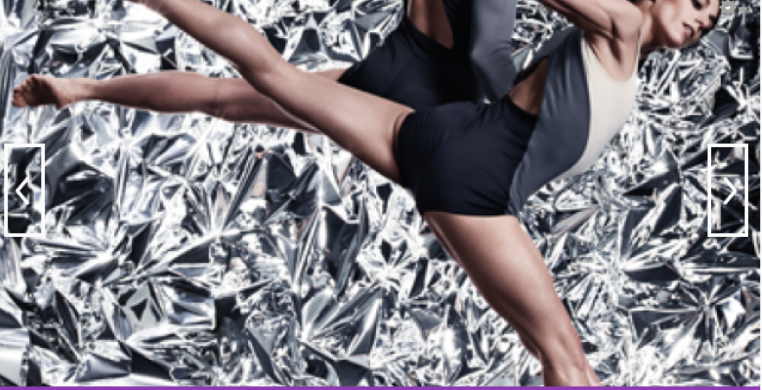Onstage at The Dance Center of Columbia College’s 42nd season opener, newly appointed Presenting Series Director Bonnie Brooks addressed a packed house to welcome Stephen Petronio Company for its third appearance at the Dance Center. Unlike previous Chicago engagements, the focus of Petronio’s new Bloodlines project is not centered on him. Instead, Petronio is investing in works from post-modern masters who have influenced him throughout his 30 years of dancemaking. In this first installment, showing through Oct. 3 at the Dance Center, Glacial Decoy and Rainforest are on loan from Trisha Brown and Merce Cunningham, respectively, performed for the first time outside their home companies. Brown’s 1979 quintet for women and Cunningham’s iconic 1968 collaboration with composer David Tudor and artist Andy Warhol were performed alongside a world premiere by Petronio: Non Locomotor.
In keeping with his previous works, Petronio's Non Locomotor is a demanding display of technical panache. Three men and a woman in tiny biketards bound and leap through the space in circular patterns and weave through challenging passes of partnering. The sole woman in the cast, Davalois Fearon, is dressed in bright teal, while the men wear muted tones. Fearon gives a tour de force performance that is often separate from the men, whose hand gestures and frequent popping of a knee or a hip almost channel Beyonce’s Single Ladies. It is a natural and necessary separation given her different colored costume, but while it all seems to makes sense most of the piece, the four dancing together feels discordant. Perhaps that is the point.
Merce Cunningham might be viewed as the Balanchine of modern dance; his preference was for technique, clean lines, and abstraction.Rainforest is no exception, although Cunningham’s signature aesthetic is peppered with hints of ape and bird-like movements alluding to its title. The Petronio dancers adapt to Cunningham’s demanding vocabulary with little sign that these are not Merce’s dancers; more importantly, they are completely on their legs and un-phased by Andy Warhol’s metallic colored poofs bouncing unpredictably throughout the space.
Trisha Brown’s Glacial Decoy provides a few more context clues through stunning black and white images projected upstage. The five women in the piece, often dancing two at a time, weave on and offstage in front of photographs evoking images of middle-America in decay. Despite the chilly colors and unemotional dancing, Glacial Decoy is alluring and coy. We never quite see as much as we want as the women dance into and out of the wings in translucent white frocks.
By sandwiching his piece between what might now be seen as historical dances, this iteration of Bloodlines (and however many are left to come) contains an overarching narrative in an evening of mostly storyless works. Petronio successfully mined a through-line from the convoluted path of post-modern dance history that leads directly to him. Given his long-ish history of dancemaking, it might be interesting to extend the bloodline further into the present, by including choreographers who were once members of the Petronio company too, thus continuing to expand on this particular vernacular of modern dance. In the mean time, Bloodlines seems an ideal vehicle to explore how we got here, and preserves works that might otherwise fall into antiquity, or worse, be lost entirely.
Bloodlines runs through Saturday, Oct. 4 at the Dance Center of Columbia College Chicago, 1306 S. Michigan Ave. Tickets are $24-30 ($5 for Columbia College Students). Note: Shows at the Dance Center now begin at 7:30pm.

